Ipassword Proccesig in Background
Passwords are terrible. They're either too piece of cake to gauge or impossible to recall, and using the same one everywhere is practically inviting hackers to accept downwardly all of your accounts at one time. Which is why password managers are a good idea.
5 things you should automate today
Password managers generate secure passwords for you, store them securely, and fill out login forms for you. When it comes to the best countersign managers, there are 2 clear leaders: LastPass and 1Password. LastPass is widely known for its free option, while 1Password stands out because of its polished pattern.
How do they stack upwards? Hither's a comprehensive look.
Common features and what nosotros looked for
1Password and LastPass both generate secure passwords and store them for yous, keeping them in a vault y'all can access across all your devices. Both use one primary countersign to secure your vault, pregnant you only need to call back 1 password to admission all of your accounts.
Because yous use these services in connexion with all your other apps, subtle differences in how they work can take a big impact, namely for ease of use. How piece of cake is it to share logins with other people? How about changing your passwords? Or toggling between multiple accounts?
Here are the features we're highlighting in our showdown. Jump to the ane that matters about to yous, or skip alee to the end for a complete characteristic comparison.
-
Apps and platform compatibility
-
Setting upwards your vault
-
Logging in to your accounts
-
Creating new passwords
-
Changing your passwords
-
Sharing logins with others
-
Data storage and protection
-
Recovering your account
-
Avant-garde security features
-
Pricing
Apps and platform compatibility
LastPass and 1Password both have robust app support beyond many platforms.
A countersign manager isn't very useful if y'all can't use information technology everywhere. If you're going to have passwords that are hard to think and type in, yous're going to need the software to help you enter your passwords no thing what site you're on.
LastPass has slightly more robust support for obscure browsers and operating systems, but unless you're using Windows Phone, it's unlikely that's going to be a deciding factor.
| LastPass | 1Password | |
|---|---|---|
| Chrome, ChromeOS | Yes | Yes |
| Firefox | Yeah | Yes |
| Opera | No | No |
| Safari | Yes | Aye |
| Border | Yes | Yes |
| iOS | Yes | Yes |
| Android | Yes | Yes |
| Windows PC | Yes (browser extensions) | Yep |
| macOS | Yes | Yeah |
| Linux | Yeah | Yes (command line) |
Considering these apps are supported by then many different platforms, there are inevitably differences in how they work on each platform. Nosotros've tested on various platforms and will differentiate as much as possible while describing the features.
LastPass and 1Password operate almost identically on mobile platforms, since Android and iOS both back up password management and autofill. Both services likewise accept browser extensions for Chrome, Firefox, Safari, and Border that work similarly.
On the desktop, even so, in that location'southward a bigger difference. 1Password offers native desktop apps for Windows and Mac users; LastPass more-or-less relies on browser plugins.
1Password has local apps for Windows and Mac that you can utilise offline to access your passwords or whatsoever other information yous have stored in your vault. These apps also offering a universal keyboard shortcut for quickly searching your passwords, something LastPass no longer offers on the desktop. 1Password for Chrome OS is a browser-based app, which is common for apps on the platform, and at that place's a command-line tool for Linux.
1Password besides offers browser extensions, which work with or without the desktop app installed. The exception is Safari—you'll need to install the macOS app, but that's typical—which no longer supports extensions that aren't tied to a desktop app.
LastPass, on the other mitt, doesn't really focus on desktop apps. The company offers a "universal installer" for both Mac and Windows that will download browser extensions for every browser, or y'all can download them all individually. There is an app in the Mac app store, but it's more-or-less just the web version of LastPass running in a dedicated window. LastPass's ain documentation recommends that you use a combination of browser extensions and mobile apps.
Overall, the differences between the services exist just on the edge cases. Both apps back up most major browsers and operating systems. However, if you desire to use a local desktop app for offline use, you may want to consider 1Password.
Setting upwards your vault
LastPass and 1Password are both like shooting fish in a barrel to gear up, especially if you already apply saved passwords.
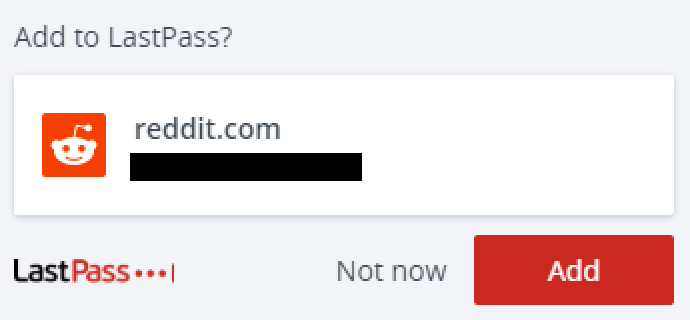
Both services require yous to create an business relationship to begin. Like any other web service, you enter and verify your e-mail address, select which program you want to use, and create a password. Since this password will protect all of your other passwords, you'll want to make sure it'south strong and that you never apply it anywhere else. Then take some time to create a long, difficult-to-guess password.
Since long passwords can be hard to remember, we suggest using a passphrase, a drove of seemingly unrelated words that are piece of cake to recall. Something similar zapiertoldmetousethispassword. But…don't really utilize that.
The main difference in the setup is that 1Password also gives y'all a secret key, which y'all'll need to access your vault on other devices. LastPass requires just your master password, while you can't get into your 1Password vault without your master countersign and secret key. This gives 1Password a slight border in making unauthorized access to your vault more difficult, without much actress inconvenience—at that place's even a QR lawmaking you tin scan to avoid typing your username and secret key out manually.
So, now that you take an account, how exercise you go your password vault up and running? It depends where you're coming from. If you've been using another password manager or saved passwords in your browser, you can import them into LastPass or 1Password.
Both work similarly: Yous export a .csv or .xml file from your old countersign manager, so import that file into your new ane. LastPass doesn't seem to have an import pick through the web app, but you can use the browser extension.
If you don't have saved passwords, and so you need to build your vault, which refers to all the logins you have stored in your account (1Password also refers to smaller, more specific groups as vaults, while LastPass calls them folders). Both make this pretty easy to do. Install the extension in your browser, and and so log in to whatever given website like you usually would. In one case you've logged in, at that place will exist a pop-up on the screen, asking if you want to add together the login to your collection. Go about your spider web browsing like normal, saving your sites as you log in, and you'll take your vault built up in no fourth dimension. It works similarly on mobile. When you lot log in to a recognized app or webpage, it'll save the login data to your vault.
Both apps also permit y'all add passwords to your vault manually. LastPass will automatically fill in the URL for the site you're on, while 1Password volition also offer to update existing logins for the site you're on, if you already accept i in your vault.
Given how well both apps tend to capture passwords when you lot first log in, though, you're unlikely to need to use this feature often. On the whole, both make it easy to add your existing passwords to your vaults, whether information technology's all at one time or over time.
Logging in to your accounts
LastPass is more streamlined, while 1Password manages multiple account logins more easily.
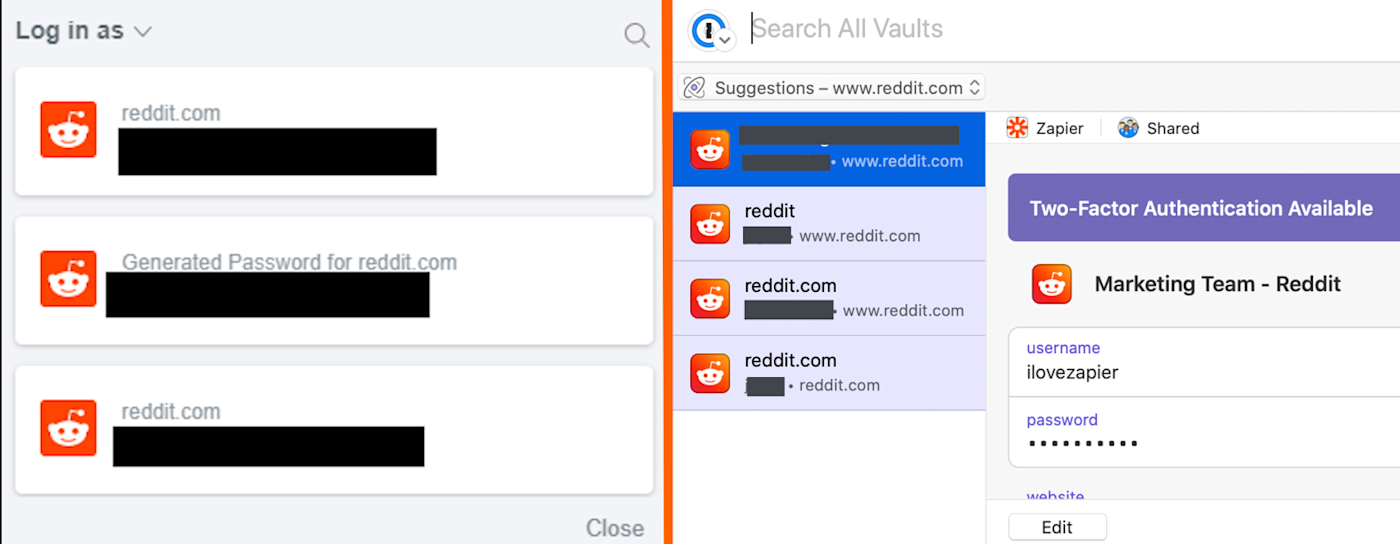
If LastPass recognizes a login page, it fills the username and password fields in past default, letting yous only click the sign in push button and exist on your way. If it doesn't recognize the site or you want to use a dissimilar account, you tin click the LastPass logo in the login box which will open a list of your accounts continued to that site. Click the account you desire to log in with and LastPass volition autofill that username and password.
1Password is a footling dissimilar. You can click on the 1Password extension icon to see a listing of your available accounts related to the site you're on. Pick one of them and 1Password will automatically make full in your username and password. Alternatively, you can click on the username or countersign fields, and printing Option + Command +\ (backslash) on macOS or Alt + Ctrl + \ (backslash) on Windows. This will open 1Password mini, which presents a list of options. Hit enter if the first proposition works, or use your arrow keys to choose the best pick. This is much faster than what LastPass offers on desktop. If you prefer clicking to keyboard shortcuts, though, you tin can right-click, select 1Password, and and so select your business relationship.
LastPass doesn't offer this characteristic, simply information technology does automatically fill passwords in as before long equally the page loads. This is less secure, certain, but it is a lilliputian faster. That means 1Password is easier to use on websites where yous have multiple accounts because you have an easy fashion to apace go through all of your options.
Creating new passwords
LastPass and 1Password both have robust password generators, with a slight border to LastPass.

The best passwords are long, random ones you can't remember. Of class, humans aren't proficient at creating bodily randomness, which is why LastPass and 1Password accept password generators to have care of that for you.
With LastPass, whenever yous're creating a new account, y'all'll encounter an icon in the password field that you tin can click to create a random countersign. If y'all select Generate and fill, it will generate a countersign and enter it into the password and confirm countersign fields. Once you create your account, it'll update your vault. This doesn't fifty-fifty give you a hazard to run into the password, so it'southward cloak-and-dagger even from you.
You tin choose More options to change the parameters, like the length of the countersign, whether or not it includes numbers or special characters, and even an option to brand the password easy to read or easy to say out loud. These concluding options are particularly helpful for passwords you might however need to interact with, like your Wi-Fi or Netflix password.
1Password works a niggling differently. To generate a password, click the 1Password extension icon in your browser's toolbar, and then click the push button labeled Generate password. Yous can customize the parameters to make a long nonsense password, a passphrase made up of random unrelated words, or a Pivot. You lot can tweak things similar whether it uses numbers or symbols or which symbol is used to separate words in a passphrase. One time you lot accept a countersign you similar, y'all tin copy and paste it into the password field.
LastPass is generally easier to use than 1Password'south standard browser extensions. If a site has special requirements for passwords, the generator in LastPass is slightly more convenient to tweak, though 1Password'southward generator opens in a carve up window which can exist handy.
Changing your passwords
LastPass has a potent border with the experimental Automobile Alter Password feature.
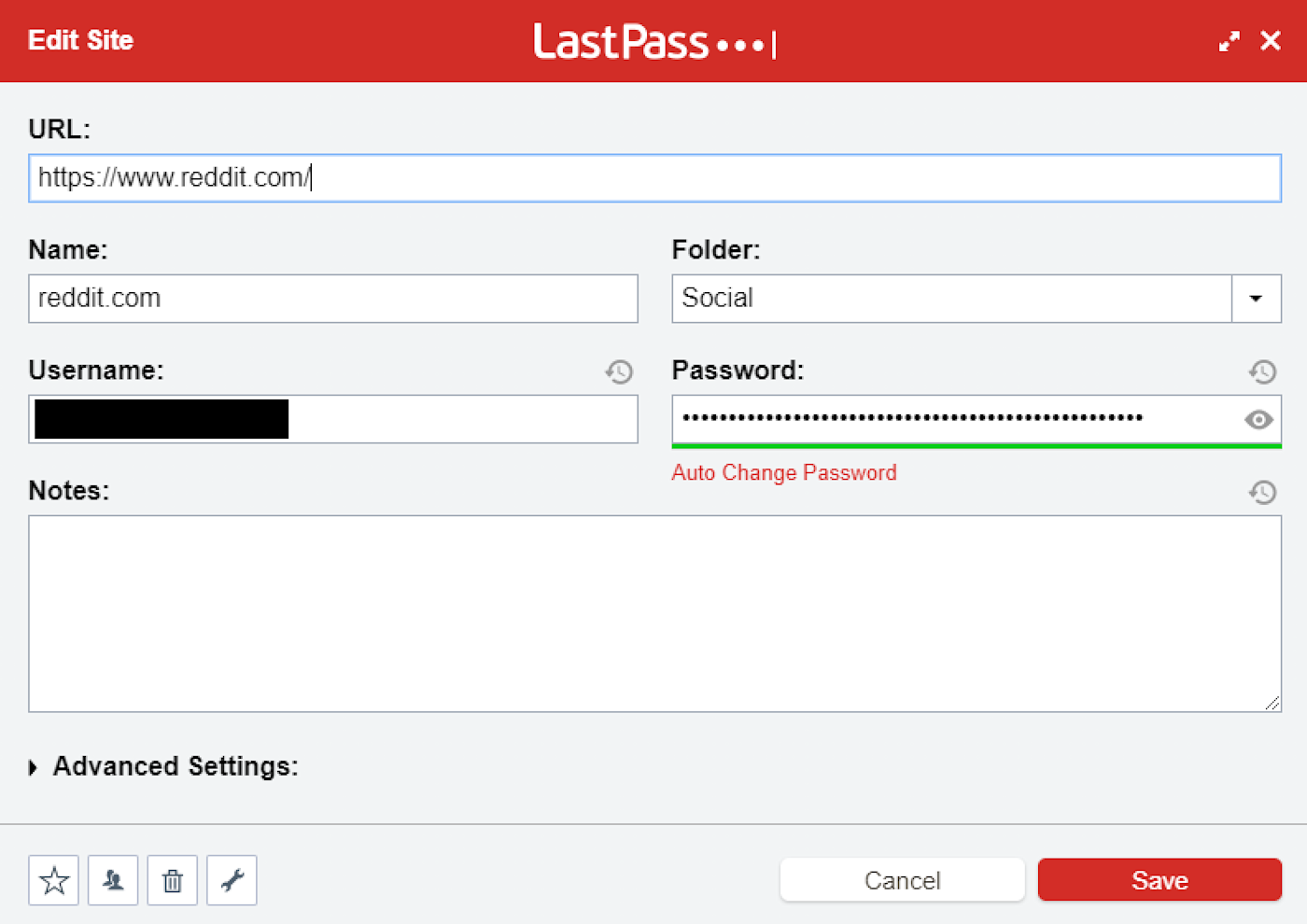
It's all-time practice to modify your passwords every one time in a while. And even if you ignore those best practices, you'll eventually get locked out of an business relationship or a website yous have an business relationship on will become hacked. Regardless, when it comes fourth dimension to change your password, LastPass and 1Password will both endeavour to pick up the new countersign and update your vault. LastPass gives you a brief pop-up telling you that it's changed the password in the vault, while 1Password will inquire if you want to apply the new password. LastPass's approach is more proactive, merely 1Password gives you more flexibility.
More importantly, both services have means of letting you know if your countersign is out of date or needs to be inverse. LastPass offers a Security Dashboard that will scan your database for duplicate, weak, or quondam passwords, every bit well equally comparison your passwords confronting a database of known security breaches. All of this adds up to an overall security score that will tell you just how prophylactic your online life is.
The feature will also tell you in what percentile of LastPass users your security practices rank. When information technology comes to security, it'south oft less important to be perfectly impenetrable than it is to exist more secure than someone else. This standing score can help give yous some perspective on how good or bad your practices are.
1Password'south Watchtower offers similar features, but a bit more than directly. In the sidebar of the desktop app, you'll come across several categories like Compromised Logins, Vulnerable, Reused, and Weak Passwords, as well as Unsecured Websites. This helps you actively keep rails of security risks. 1Password doesn't offering any kind of scoring system, but it does make it easier to go on an middle on when you need to change your passwords.
All that said, LastPass has one ace up its sleeve: Motorcar-Change Password. This feature allows you to click one button to automatically alter your countersign on up to 75 websites including Facebook, Twitter, Amazon, and more. In your vault, some entries will say Auto Change Countersign under the password field. Clicking that opens a new tab, navigates to the password change folio, generates and submits a new password, and updates the vault for you.
The process can take a minute or two—and yous might demand to manually enter a two-factor authentication lawmaking if you have that enabled—merely otherwise you don't have to do anything. Even if the feature is but supported on a relatively modest number of websites, it's incredibly useful.
Sharing logins with others
LastPass has more features on the low end and includes sharing exterior of teams.
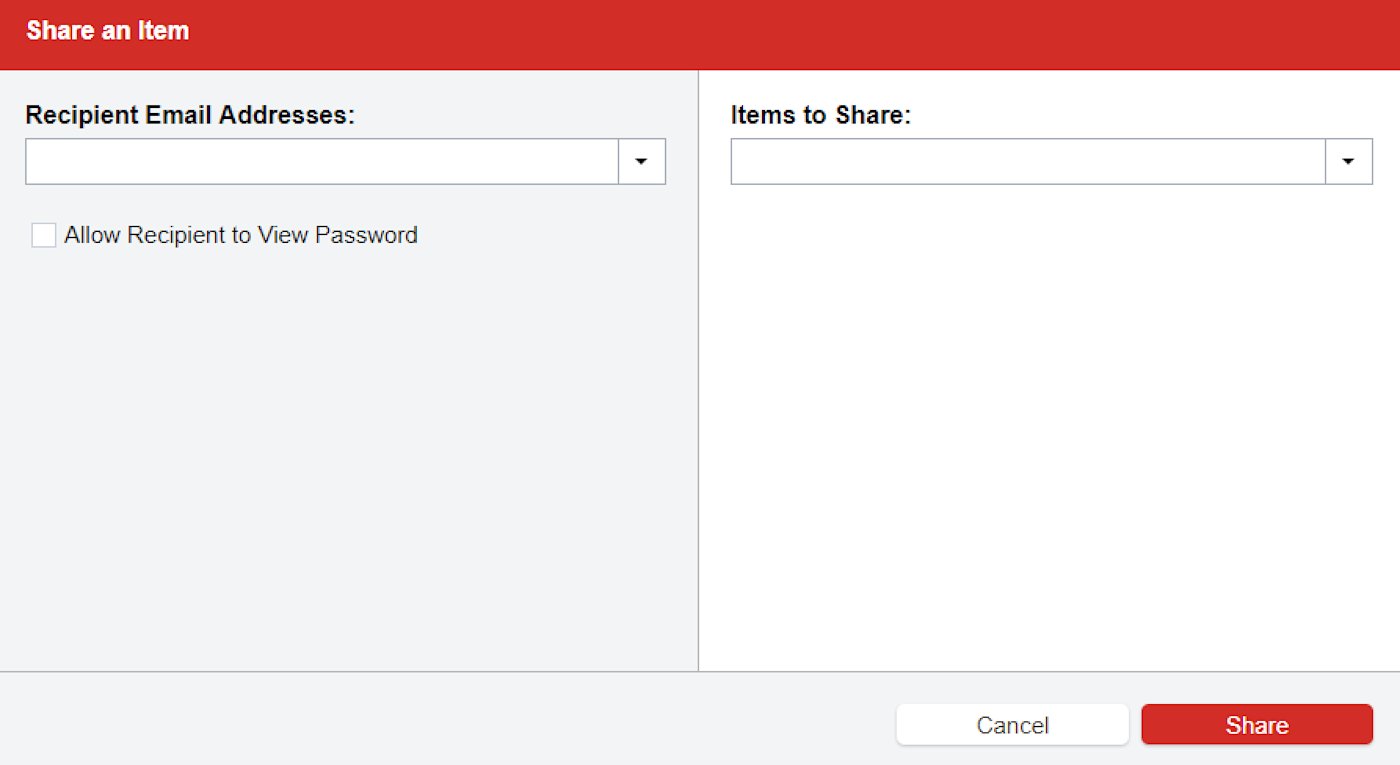
When it comes to sharing login information with others, LastPass has a clear advantage on the cheaper plans. Fifty-fifty a complimentary personal LastPass account can share logins with others. In the Sharing Center section of the web app, you can enter a colleague's email accost and choose which items to share with them. Y'all can even hibernate the password, letting them log in without letting them see the password in their vault. Since 1Password doesn't even offer a free tier, this is a potent advantage.
At the loftier end, the two are much more similar. Both 1Password and LastPass accounts at the family, team, and enterprise levels permit y'all create "vaults" or "folders" containing multiple logins to share with your team. That allows you to share sets of passwords with specific groups, e.yard., your Marketing team. Each service has a dashboard to manage who has access to what: the admin can give permissions to view and modify all passwords, or restrict what can be done with them on a user-by-user ground.
The big difference between the two apps is how they call up near sharing: 1Password works exclusively in vaults, while LastPass lets you share both folders and individual logins. Sharing of individual logins is available on all LastPass plans, while 1Password has no similar feature. Both allow sharing with guests outside of your team/organization, only to share just a single login with 1Password, you lot'd take to create a vault with goose egg more than that single login, which can be an administrative headache if yous accept to share different sets of logins with a lot of different people.
If you're but managing your team's or family'southward passwords, there isn't a killer feature to distinguish the two. If yous have to deal with freelancers or anyone else that's non a permanent member of your team, then LastPass offers a lot more flexibility.
Information storage and protection
LastPass and 1Password both store data on their servers, but 1Password has an older, offline-only option.
Even though you shop your data on LastPass or 1Password servers, they can't admission your vault or any of your logins. All the data is encrypted, which ways it'south an incomprehensible hulk of data if y'all don't take the encryption keys. Those keys are generated on your device using your master password (and secret key for 1Password), and those are never sent anywhere, even to LastPass or 1Password. This secures your vault against data breaches or social engineering attacks, but also makes account recovery more difficult.
If y'all're understandably wary of storing data on servers you don't control at all, then 1Password has an alternative. Older versions of the app let you to shop your password vault locally. You tin can even sync your data through services similar Dropbox, so you command the space where your vault is stored. Nonetheless, 1Password no longer updates or maintains the older versions of the app that you'd need to use this method. More often than not speaking, information technology's not a good idea to use one-time, unsupported software for security, and so we wouldn't recommend this method unless you have a very specific need for it.
Recovering your account
LastPass gives you more user-friendly options, while 1Password puts more control in your hands.

It is very, very of import that you don't lose the login data for these apps, considering yous may be locked out completely. Neither LastPass nor 1Password can access your vault, which is good—that's why your passwords are secure. But this also means that, if y'all forget your master password, it tin can exist an enormous hassle.
Having said that, both services take ways to handle this. In full general, 1Password leans more than toward the preventive manner of handling disasters—which means the app is expecting you to exist responsible. When yous sign up, you'll get an Emergency Kit, which has your secret key, electronic mail address, and infinite for you to fill in your master password. They recommend printing and keeping a re-create somewhere like a condom deposit box, though an encrypted copy kept offline—like on a USB stick you keep locked away—can also work.
If yous're on a shared plan, someone on your team/business organisation/family program may exist able to assistance you lot restore your account in the consequence you lose your Emergency Kit, or you can consign your vault from a device that hasn't logged out. This page provides a listing of options yous can try if you go locked out of your vault. Nonetheless, they all involve working around the access you already have. At that place'southward no method for the company to help you regain access to your vault if you lot lose your countersign.
LastPass, on the other manus, provides more than convenient recovery methods, which are arguably less secure. You can set up recovery through SMS codes or one-fourth dimension passwords sent via email. The SMS codes are sent to your telephone number and activate a locally-stored ane-fourth dimension password to unlock your vault, after which you volition create a new master countersign. You lot can besides get a one-fourth dimension countersign sent to your email account, though these are specific to each combination of figurer and web browser, and then using one tin can exist a footling complicated.
This process can pose a mild security risk, since an attacker who has access to your telephone or email could theoretically use the same process to get admission to your vault. But SMS recovery codes are off past default, and emailed recovery passwords should be a little difficult to utilize since they take to correspond to the verbal estimator and browser. In other words, an assaulter would have to likewise be using your computer for the recovery passwords to be useful. This page has more data about all of your recovery options.
Advanced security features
LastPass and 1Password both offer compelling security features.
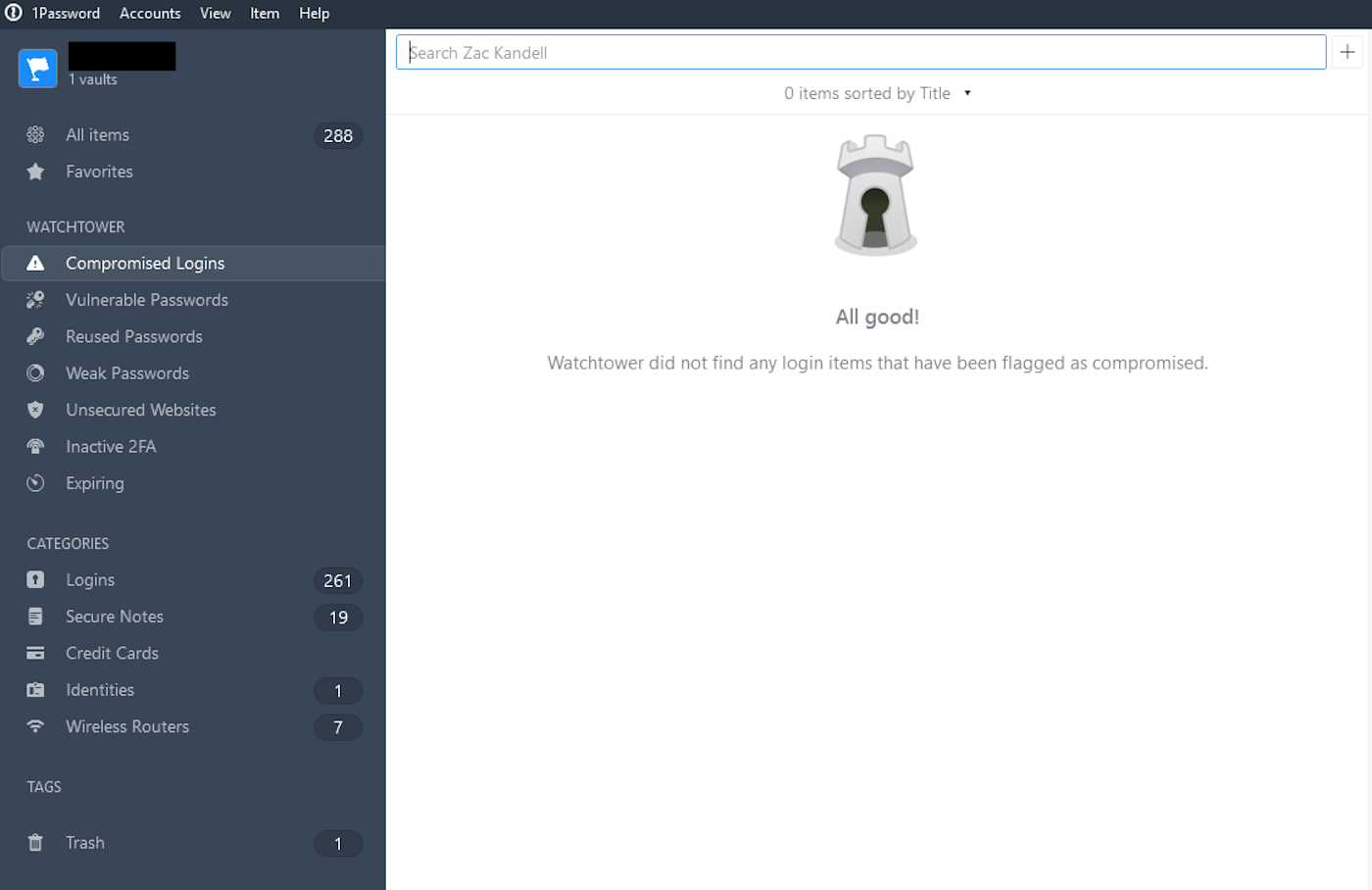
There are a few extra features that aren't the main selling points, but may be useful for deciding which password director you cull for your business organisation.
Two-gene hallmark
1Password and LastPass both offer two-gene authentication to protect your vault. Both work with many common authentication apps and hardware keys, with LastPass supporting slightly more. Unless you're using something obscure for security, it's unlikely this would be a deciding factor.
Emergency access
LastPass has an Emergency Access feature in personal and family unit plans, assuasive someone to access your vault if something happens to you (such as illness, decease, or disappearance). A trusted person can request admission to your account at any time. If you don't decline the request within a fix amount of fourth dimension, they get access to your vault, which yous can revoke at any fourth dimension.
Travel way
1Password lets y'all gear up some vaults every bit safe for travel and others as not. When you lot turn on travel mode, the sites that are listed as not safe for travel are removed from your device. This is useful especially at border crossings where you may have to hand your phone or computer to the authorities, and also helps any time you're traveling with information that would be dangerous if lost or stolen.
Restrict access to particular countries
Past default, LastPass only lets you admission your business relationship from the country yous created it in. When traveling, you have to proactively allow it to permit yous access your vault from whatever state you lot're going to. This prevents malicious actors coming from another country from getting access to your vault.
Pricing
The best toll volition depend on your specific situation
| LastPass | 1Password | Defining features | |
|---|---|---|---|
| Private | Free bones (express to computers or phones); $3/month premium (billed annually) | $2.99/month (billed annually); $three.99/month (billed monthly) | Single user, access to all apps |
| Family unit | $4/month, upwards to vi users (billed annually) | $4.99/month (billed annually); $6.99/month (billed monthly); Up to 5 users | Multiple users, unlimited sharing between them, direction dashboard |
| Teams | $4/user/month (billed annually), 5-50 users | $19.95/month for up to ten users (billed annually) | The above, plus admin dashboard and user management |
| Business | "Concern" plan starts at $half-dozen/user/month (billed annually) | $7.99/user/month (billed annually) | The above, plus dedicated customer support, advanced reporting, and avant-garde security policies |
| Enterprise | Concern-specific add together-ons available | Custom pricing | Can be customized to specific business organization needs |
LastPass is the cheaper pick for private plans; 1Password tends to be cheaper for groups. LastPass has a free individual plan, which 1Password lacks, but information technology's extremely limited. You tin't sync the gratis version between computers and phones—y'all accept to cull to employ it only on computers or only on phones.
There's no free version of 1Password—in that location is a 30-day costless trial, just annihilation past that will cost you. The visitor has an option to manage vault storage yourself without a paying membership, just it's not actively supported anymore.
For personal plans, pricing is identical at $3/calendar month for one user. For families, though, 1Password is the better bargain: LastPass is $4/month per user, while 1Password is $5/month for upwards to v users. If you want an account for ii people, 1Password is the better deal.
Team and enterprise plans have more than complicated cost differences. LastPass has a teams programme that costs $4/user/calendar month and a concern plan that starts at $6/user/month. 1Password similarly has a teams plan for upward to ten users that costs $19.95/month, which is cheaper than LastPass for teams with between vi and ten users. There's also a business programme for $7.99/user/month, and an enterprise tier with a custom rate.
So at that place's no clear winner in the price department, actually—it'southward going to depend on your specific situation.
LastPass vs. 1Password: Which app should y'all use?
Both LastPass and 1Password are solid password managers, roofing the majority of use cases yous're likely to come across.
LastPass is the only app that offers a costless version. For the extra money, 1Password offers local apps, a more polished UI, and a somewhat firmer security stance. If you'd rather store your vault locally or if you prefer the hush-hush primal approach that adds one extra pace to getting into your account, then 1Password is probably for you. If non, then LastPass offers more features for less money.
Finally, here'due south a side-by-side comparison of the two:
| LastPass | 1Password | |
|---|---|---|
| App and platform compatibility | Windows, Mac, iOS, Android, Chrome, Firefox, Safari, Opera, Microsoft Edge, command line, Debian, Ubuntu, Windows RT, Dolphin Browser | Windows, Mac, iOS, Android, Chrome, Firefox, Safari, Opera, Microsoft Edge, command line |
| Setting up your vault | Import feature from browsers and other password managers; accounts added equally you log in | Same every bit LastPass |
| Logging in to your accounts | Login information filled in on folio load; select account from a list | Login information filled in when you lot click browser extension |
| Creating new passwords | Countersign generator accessible when creating passwords | Passwords generated using browser extension |
| Changing your passwords | Use password generator when on change password screen; experimental "Auto Alter Password" automation characteristic | Apply password generator when on change password screen |
| Sharing logins with others | All plans can share with individual users outside your team; family, team, and enterprise take robust shared folder features | Family unit, squad, business, and enterprise plans have robust shared binder features |
| Information storage and protection | Encrypted vault stored on LastPass servers | Encrypted vault stored on 1Password servers; pick to store vault offline (non actively supported) |
| Recovering your account | Password hint, SMS codes (can be disabled), one-time passwords (tied to machine and browser) | Countersign hint, Emergency Kit |
| Advanced security features | Two-gene authentication, security check, emergency admission, restrict to countries | Two-factor authentication, Watchtower, travel mode |
| Pricing | Free basic private plan, $three/month premium individual, $4/user/month family, $4/user/month teams, $half-dozen/user/month enterprise | $2.99/month individual, $iv.99/month family (up to five members), $19.95/user/month teams plan (upwardly to 10 users), $7.99/user/month business concern plan, Custom quote for enterprise programme (all prices billed annually) |
This commodity was originally published in Feb 2019 and was updated well-nigh recently past Justin Pot.
Get productivity tips delivered straight to your inbox
Nosotros'll email you 1-iii times per week—and never share your information.
Source: https://zapier.com/blog/lastpass-vs-1password/
0 Response to "Ipassword Proccesig in Background"
Post a Comment